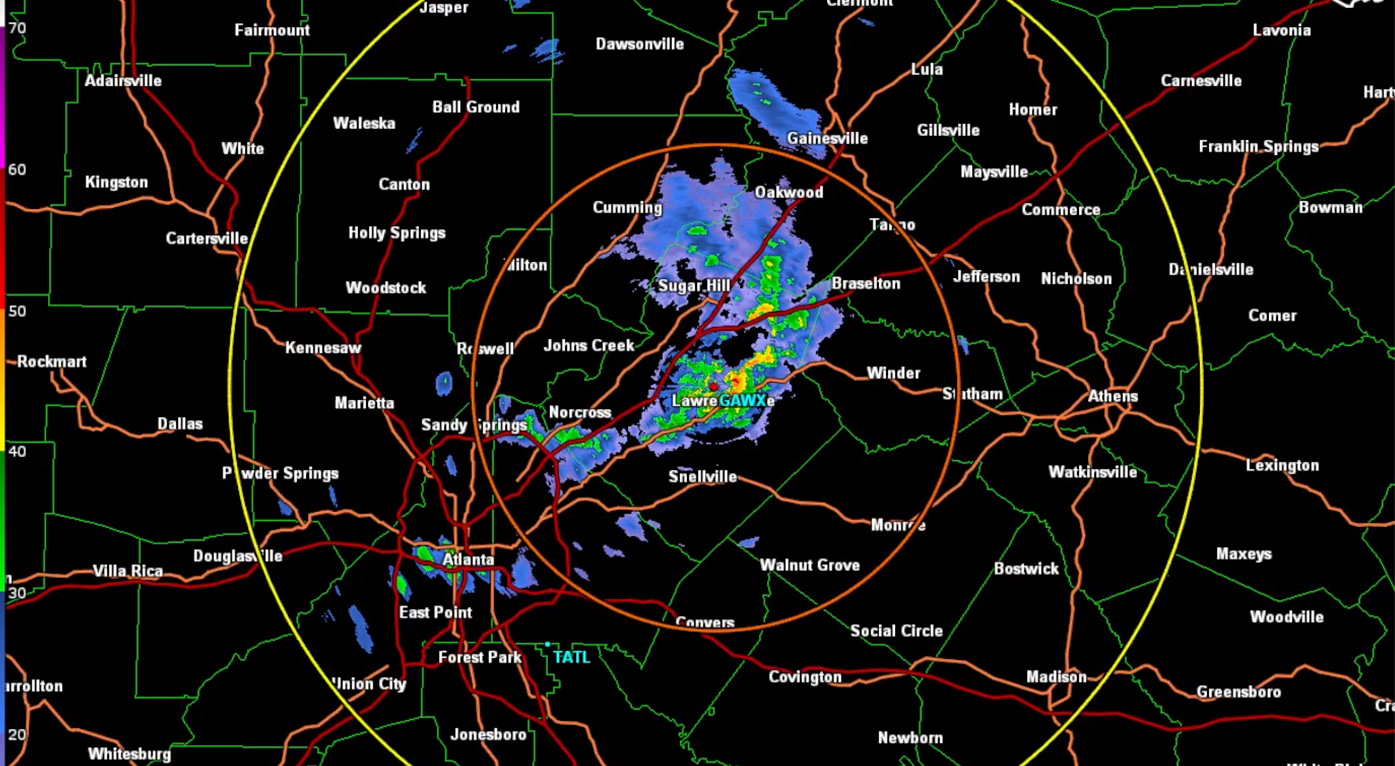
Collaboration among three Georgia institutions of higher education on the operation of a new weather radar system will enhance student learning, provide new opportunities for research, and help improve severe weather coverage in north Georgia.
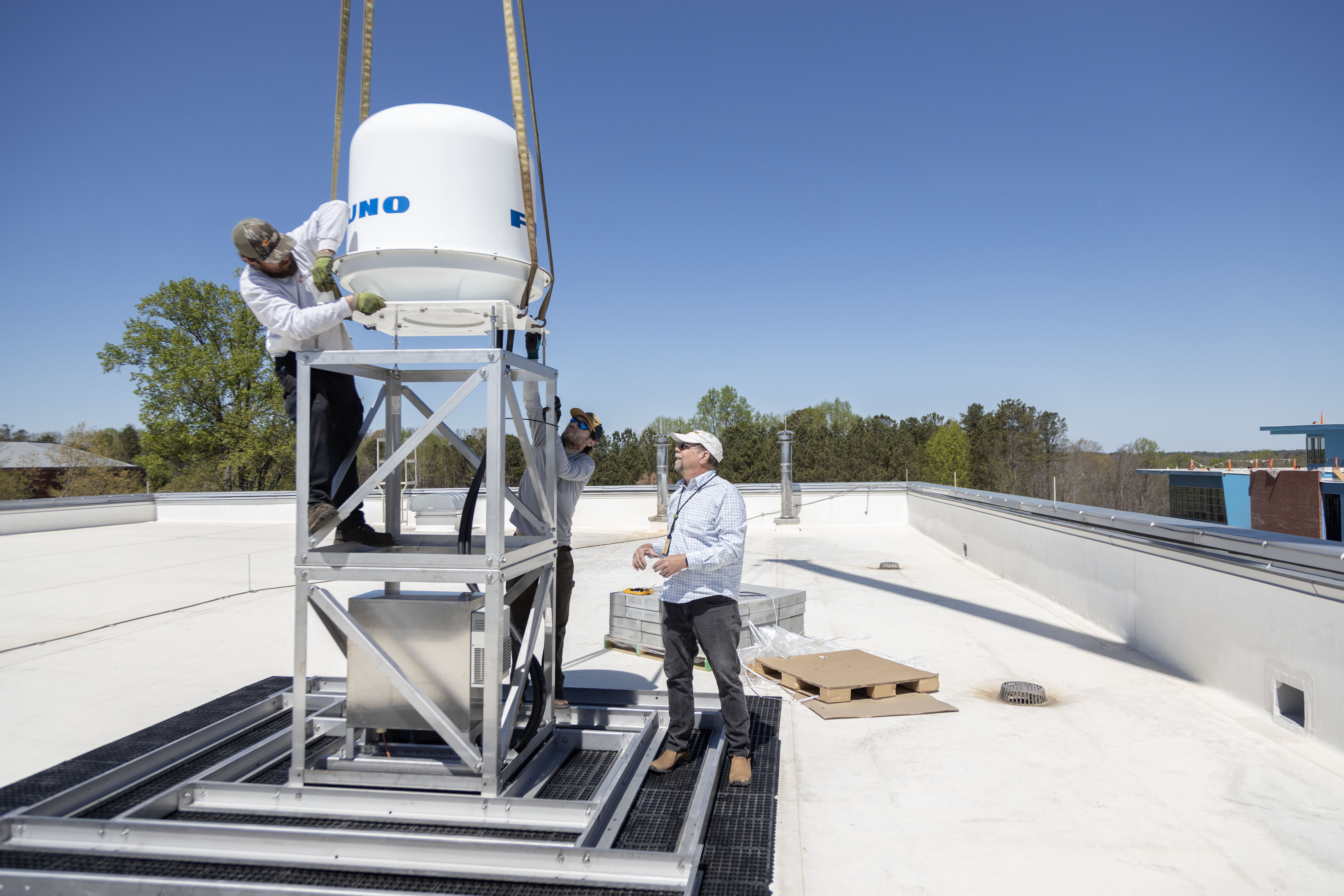
Installed recently at Georgia Gwinnett College (GGC), an X-band weather radar purchased two years ago by the Georgia Institute of Technology and the University of Georgia (UGA) is now providing data for a section of north Georgia where information on severe storms such as tornados can be limited by terrain.
The radar will also be used for research into weather and severe storms, and by students at the three institutions for learning about everything from physics and engineering to weather, rainfall, and the effects of changing climate on the migration patterns of birds and insects. The instrument will be one of just a handful of weather radars operated by universities in the United States.

“We are really excited about this partnership with Georgia Tech, the Georgia Tech Research Institute, the University of Georgia, and Georgia Gwinnett College,” said Marshall Shepherd, Associate Dean for Research, Scholarship and Partnership at UGA’s Franklin College of Arts and Sciences and Director of UGA’s Atmospheric Sciences Program. “The radar will be a real-time component of classes, so it’s creating new instructional and service capabilities. It will also enable researchers at the University of Georgia and Georgia Tech to pursue new research opportunities in the areas of severe weather, frozen precipitation – and perhaps even studies of birds and insects.”
The radar will provide a new data source for UGA’s WeatherDawgs service, which provides hyperlocal weather data not only for the Athens community, but also for residents of eastern and northeastern Georgia. The system will also provide a real-time component for the mesoscale meteorology course taught at the university.
WATCH a video describing the weather radar
For Georgia Tech, the radar will support the work of the Severe Storms Research Center (SSRC), a state-funded initiative that serves as a focal point for severe storms research in the state. The radar will also support research and education at Georgia Tech, including courses on weather radar systems and studies of lightning being done in the School of Electrical and Computer Engineering.
“The new radar will help fill some low-level gaps in weather radar coverage in north Georgia, and give higher-resolution data for the Georgia Gwinnett campus, University of Georgia campus, Georgia Tech campus and areas in between,” said John Trostel, director of the SSRC. “This is an area where both UGA and Georgia Tech have interests because it goes from urban to suburban, then back to urban. We might see some very interesting weather phenomena going on in those transition areas.”
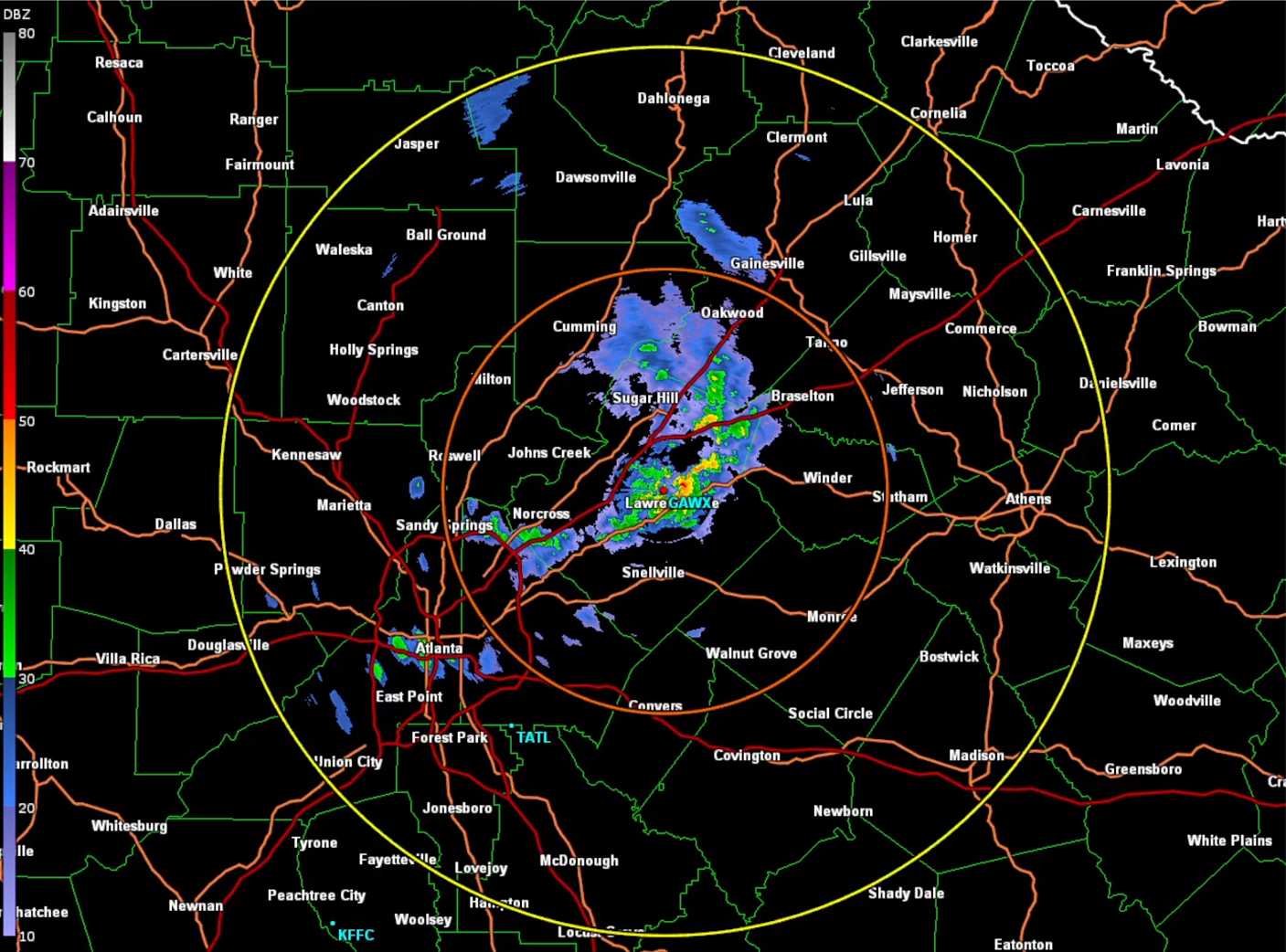
The National Weather Service has access to a feed from the radar and will use it to obtain information about low-altitude weather activity that can’t be seen as well from sources such as the NEXRAD radar based in Peachtree City and the Terminal Doppler Weather Radar at Hartsfield-Jackson Atlanta International Airport, Trostel added.
For Georgia Gwinnett College, the radar will provide real-world examples of how physics and engineering concepts are applied. Data from the radar system, which will be accessible to the college, would also provide students with a new research opportunity that is a required component of the science curriculum.
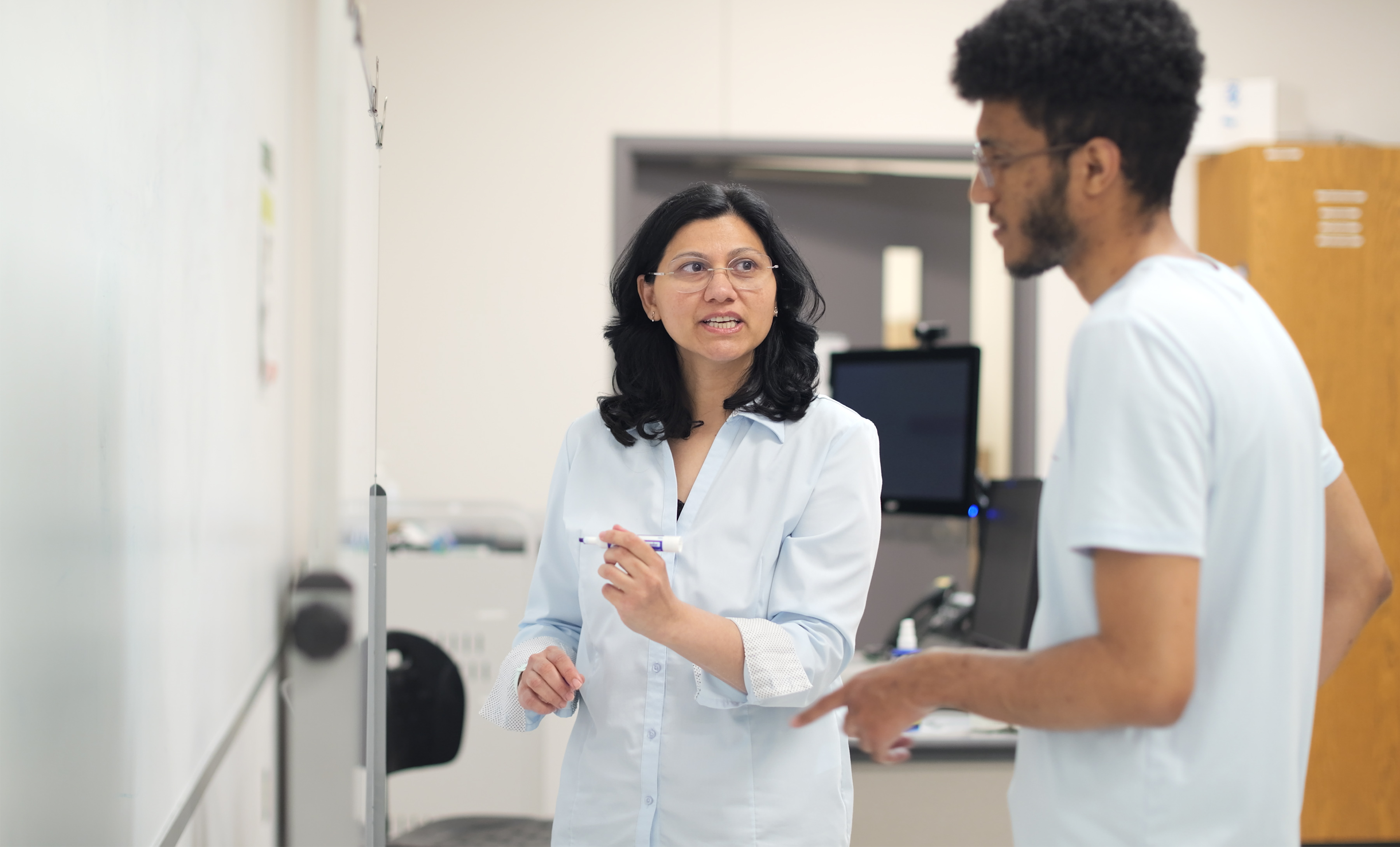
“Our Physics and Pre-Engineering courses already cover the concepts of electromagnetic waves and the Doppler effect, which are the main principles behind radar,” said Neelam Khan, the Chair of the Physics and Pre-Engineering Department at Georgia Gwinnett College. “Through this radar, students will learn about the applications of Doppler radar to track weather patterns and visualize the data it produces.”
Connections with the University of Georgia, Georgia Tech, and the Georgia Tech Research Institute will also help broaden the experience of students at Georgia Gwinnett College, a four-year public college that was founded in 2005 and now has more than 11,000 students, Khan said. All three collaborating institutions are part of the University System of Georgia.
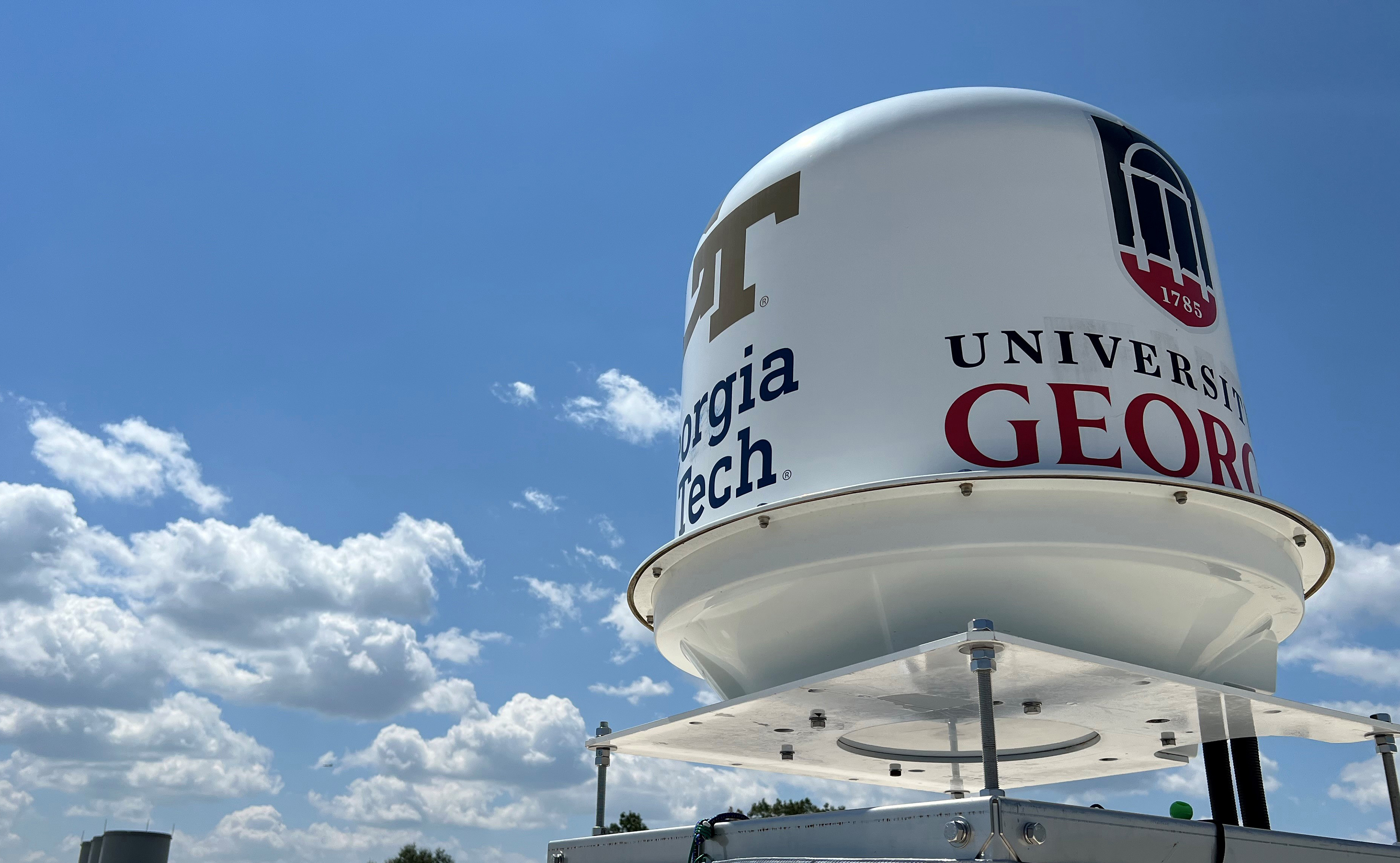
The Furuno WR-2100 X-band weather radar was purchased in 2022 using funding from Georgia Tech and the University of Georgia. It was initially placed atop a building on GTRI’s Smyrna campus, where it underwent tests while Trostel and Shepherd searched for the best location for a more permanent installation. The researchers have used the device to look at storms, generate data, and practice data analysis.
The Georgia Gwinnett location was selected because the campus location enables coverage for both Atlanta and Athens. The Gwinnett County location also helps fill potential gaps in northeast Georgia and brings a unique resource for GGC’s educational mission. The radar is now fully operational.
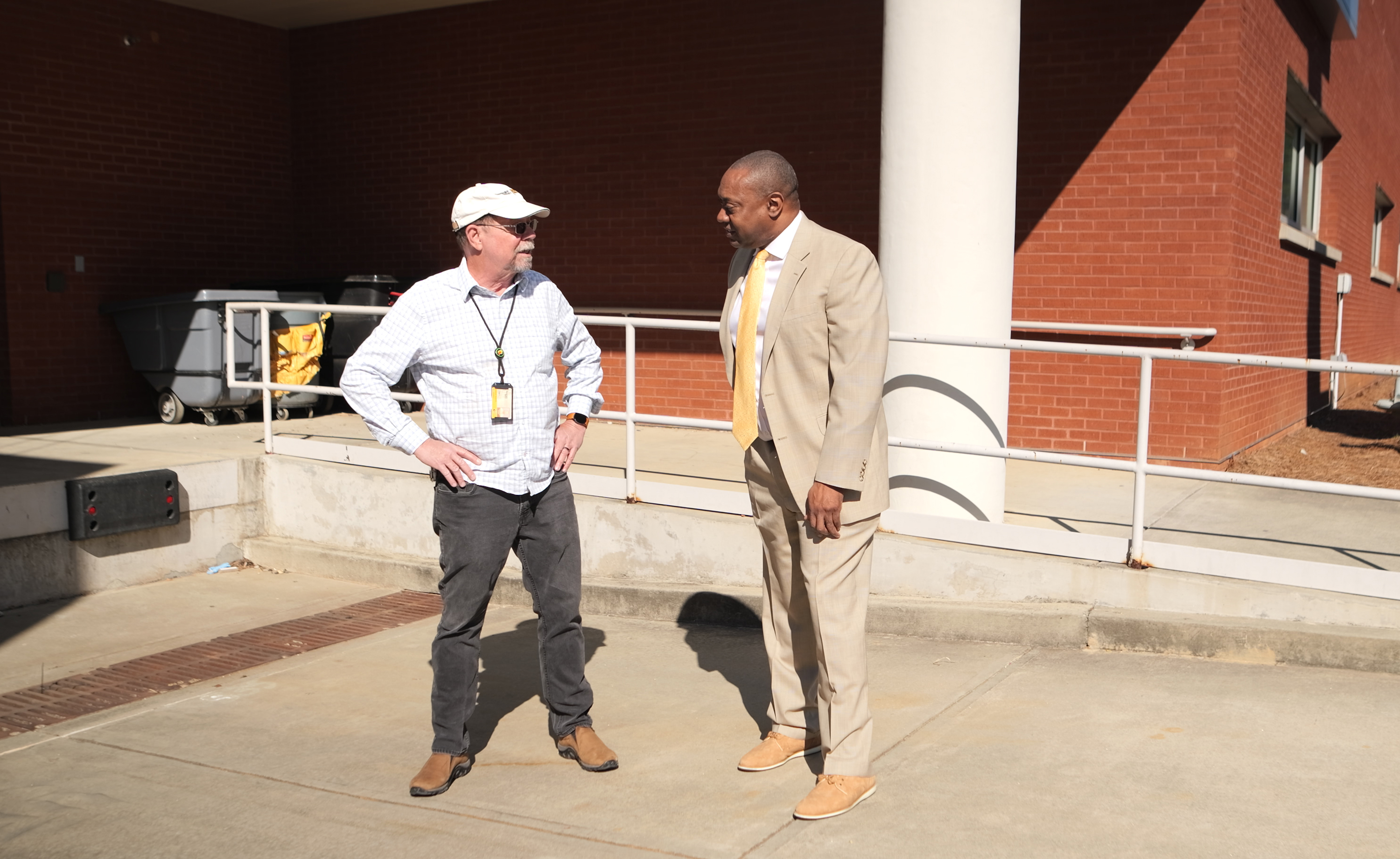
Owning and operating a weather radar is unusual for colleges and universities, but not surprising given the impact of severe weather in Georgia, Shepherd noted.
“Weather is a significant threat to our lives and property, particularly in Georgia,” Shepherd said. “While we have an adequate radar network from the National Weather Service and the Terminal Doppler Weather Radar, there are often gaps and needs for higher resolution, more detailed information. Our institutions have entered very rare air in owning and operating a weather radar that will benefit our students, the state, and our research enterprise in the University System of Georgia institutions.”
Because they’ll be able to control the geographic areas covered by the radar and the level of detail in the information gathered, the new weather radar will be a useful tool not only for tracking storms, but also for conducting research, Trostel said. Its ability to provide highly detailed information even allows it to track the movement of insects and birds, for example.
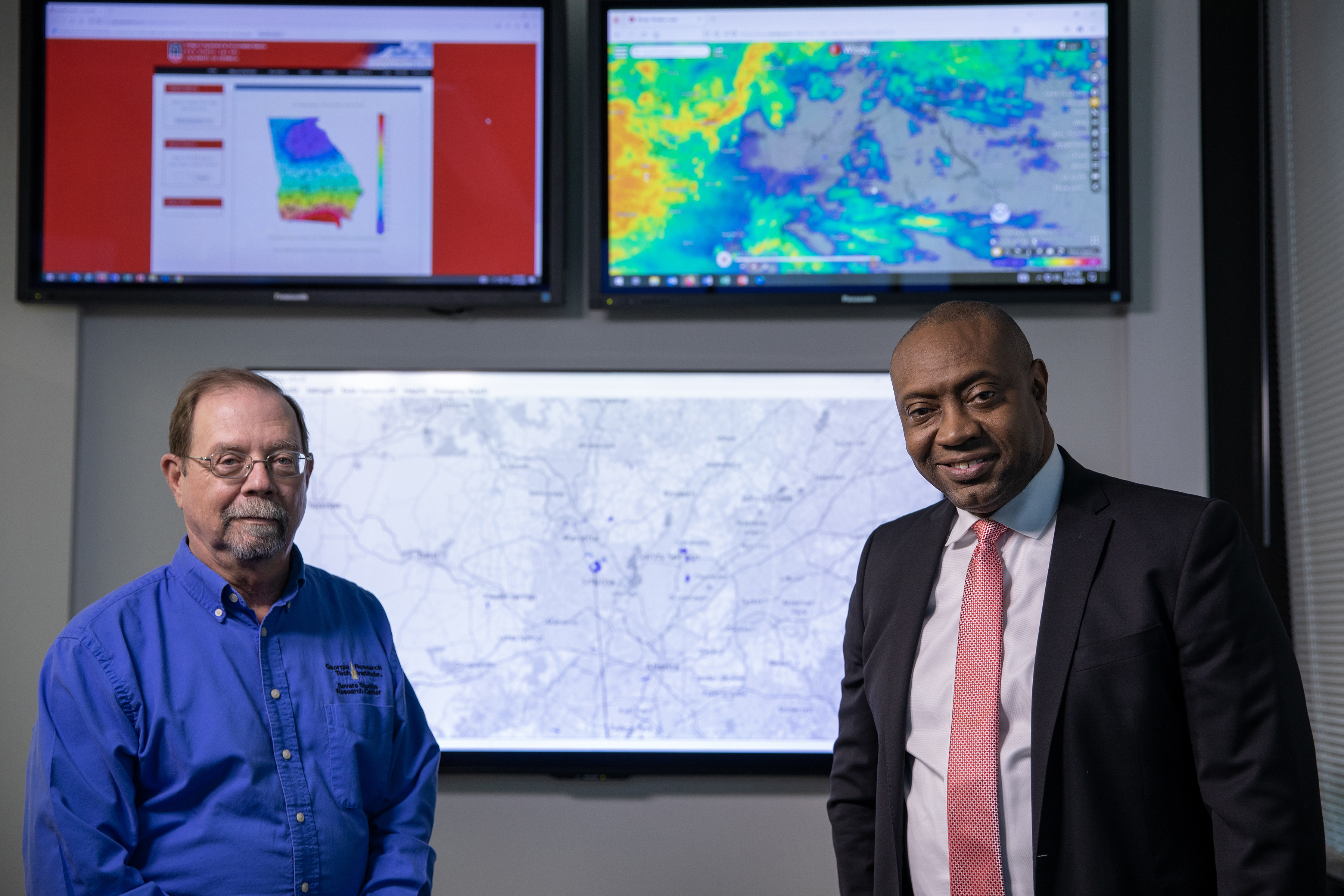
“We can see things at higher resolution, and we have complete control over how we manipulate the radar beam to look at things,” Trostel said. “The radar is much less expensive to purchase and operate than other weather radars, which makes it a budget-friendly tool for university research.”
The instrument cost approximately $150,000 to purchase and was acquired through donations and internal funding at UGA and Georgia Tech. Shepherd and Tom Mote, the founding director of the Atmospheric Sciences Program at UGA, contributed funds from institutional research budgets. A significant financial gift was also acquired from Elaine Neal, an alumna of the UGA Department of Geography and longtime donor to the University of Georgia.
At Georgia Tech, funds were provided by GTRI’s Sensors and Electromagnetic Applications Laboratory, and the Aerospace, Transportation and Advanced Systems Laboratory, the Georgia Tech Office of the Executive Vice President for Research, and Georgia Tech’s College of Engineering.
Writer: John Toon (john.toon@gtri.gatech.edu)
GTRI Communications
Georgia Tech Research Institute
Atlanta, Georgia USA
The Georgia Tech Research Institute (GTRI) is the nonprofit, applied research division of the Georgia Institute of Technology (Georgia Tech). Founded in 1934 as the Engineering Experiment Station, GTRI has grown to more than 2,900 employees, supporting eight laboratories in over 20 locations around the country and performing more than $869 million of problem-solving research annually for government and industry. GTRI's renowned researchers combine science, engineering, economics, policy, and technical expertise to solve complex problems for the U.S. federal government, state, and industry.



